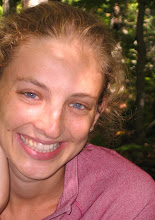 Glenn Ligon, Notes in the Margin of the Black Book (1991-1993)
Glenn Ligon, Notes in the Margin of the Black Book (1991-1993)Until May 14, 2008, the International Center of Photography in New York will hold a very special exhibit on its lower floor: Archive Fever—Uses of the Document in Contemporary Art. Placed in what we could think of as the museum’s basement, Archive Fever brings energy to the dark, underground space, in the same way in which the exhibit breathes new life into the concept of archive. As curator Okwui Enwezor mentions in the press release, the idea of an archive “evokes a dim, musty place full of drawers, filing cabinets, and shelves laden with old documents, an inert repository of historical artifacts.” In contrast, the works on exhibit at Archive Fever are contemporary, vibrant and very well displayed. The floor has been organized so that film and photography coexist with each other without fighting for the visitor’s attention. Visitors are offered short and informative explanations on the context for each work, making the show, archive of its own accord, accessible and attractive for the gaze and the mind.
In addition to some excellent curatorial decisions in the organization and display of the pieces, Enwezor has also succeeded in bringing together a great selection of artists and subjects. Archive Fever contains work by 25 artists from all over the world. From Mexico to Switzerland, from Albania to Cuba and the Bronx, these artists use the concept of archive on a wide range of topics. Some of the work looks at the Holocaust, such as Eyal Sivan’s edited version of Rony Bauman’s film on the trials of a German army specialist in Jerusalem. In The Specialist: Eichmann in Jerusalem (1999), Sivan has cut and edited Bauman’s filming of Eichmann’s trial so that the film is no longer chronologically coherent. Sivan edits the original footage in order to shift the focus of Bauman’s documentary on the defensive strategy of Eichmann, rather than on the dramatic and emotional development of the whole trial. By doing so, Sivan simultaneously engages with archival material and creates new material based on a different perspective.
Other artists take different approaches. Rather than working with actual historical figures, Zoe Leonard invents a new character for The Fae Richards Photo Archive (1993-1996). Leonard’s project takes the form of an archive that focuses on the fictitious career of a Black actress from the beginning of the twentieth century. Through Fae Richards, Leonard brings attention to race and gender politics in the entertainment industry, particularly Hollywood, while simultaneously hinting to the invisibility of those characters that are not acknowledged by mainstream culture.
To some extent, Glenn Ligon also invents a new archive by identifying Mapplethorpe’s Black Book as archival material. In Notes on the Margin of the Black Book (1991-1993), Ligon exhibits Mapplethorpe’s 91 erotically charged black and white images of young Black men, together with text from different sources: from critical thinkers, to newspaper personal ads, to Mapplethorpe’s own words. Hung next to each other, the images and the text create a visual conversation that opens up Mapplethorpe’s work for further critical scrutiny in terms of race, sex, and objectification.
Through this well researched and beautifully organized show, Enwezor succeeds in raising the temperature of our ideas and our thoughts. Archive Fever covers some of the hottest topics in contemporary theory and culture, its title a direct reference to Jacques Derrida’s own Archive Fever: A Freudian Impression, and the exhibition offers a great occasion to view intelligent and provocative art. As the tension between the personal and the political is explored again and again throughout the exhibition, we discover the infinite possibilities for thinking about archives and documentation through art as well as through our own sense of the past and the present. From war and the Holocaust, to issues of gender and sexuality, to explorations of post-colonial and race relations, challenges our understanding of history through exciting and thought provoking pieces, infusing the intellectually complex concept of archive with new meaning through layered artistic distillations.
International Center of Photography
January 18 - May 4
http://www.icp.org/site/c.dnJGKJNsFqG/b.732135/

No comments:
Post a Comment